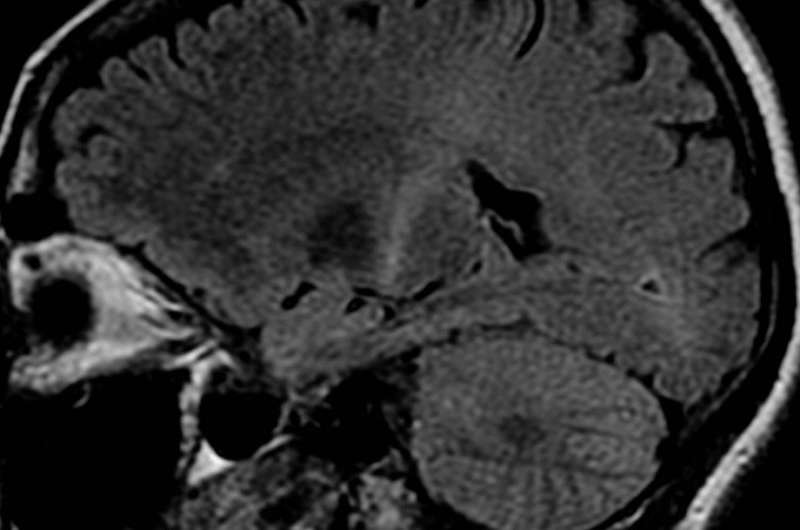Research points to future test for amyotrophic lateral sclerosis

Researchers at the University of Toronto (U of T) have uncovered new insights on the genetic causes of Amyotrophic Lateral Sclerosis (ALS), which is also known as Lou Gehrig's disease. These findings could uncover a new way to detect a genetic predisposition to ALS before the disease strikes.
A common mutation associated with ALS is an unstable repeated DNA sequence within the C9orf72 gene that could reach into the thousands. However, it is unknown how many repeats would be sufficient to cause the disease. A way to predict if the number of repeats increases to the damaging range is the addition of methyl groups to the repeats. This modifies the DNA, shutting off production of C9orf72.
The study—led by Professors Ekaterina Rogaeva and Lorne Zinman of the U of T Division of Neurology—followed three generations of a single family. While the grandparents and parents in the family were healthy, four of five adult children possessed the repeat methylation, as a result of a damaging mutation in the C9orf72 gene responsible for ALS. Two of them have already died due to complications of ALS.
The cause of ALS is unknown in about 90 per cent of patients. The remaining 10 per cent are attributed to genes passed down through parents. Scientists have long understood that people with genetically acquired ALS have a parent with the disease. However, the study by the Rogaeva and Zinman team found that neither parent nor grandparents had ALS.
In most people, it's common for the C9orf72 gene to have less than 30 repeats. The father examined in this study had 70 unmethylated repeats, which is not sufficient to cause ALS. Yet, in his children the mutation expanded to more than 1000 repeats. While the father had an overexpression of C9orf72, the children had reduced expression of that gene. The researchers believe these factors explain how his children acquired ALS, while he remained unaffected.
"With further research, we may be able to use this information to develop a genetic test that can identify if parents are likely to pass a mutation that may cause ALS in their offspring," said Zinman, who is also an associate scientist at Sunnybrook Research Institute and a staff neurologist at Sunnybrook Health Sciences Centre.
By expanding this research to include other multi-generational families, as well as study unaffected parents, the team hopes to identify a range of C9orf72 repeats that can be used to predict a genetic predisposition to ALS in children.
"We were fortunate to have the opportunity to look at a multiple generation family," said Rogaeva, who is also a professor at the Tanz Centre for Research in Neurodegenerative Diseases. "It gave us a much more complete picture of the genetic development between each branch of the family tree."
Their research was published in June 4 issue of The American Journal of Human Genetics.
More information: Jump from Pre-mutation to Pathologic Expansion in C9orf72, dx.doi.org/10.1016/j.ajhg.2015.04.016



















